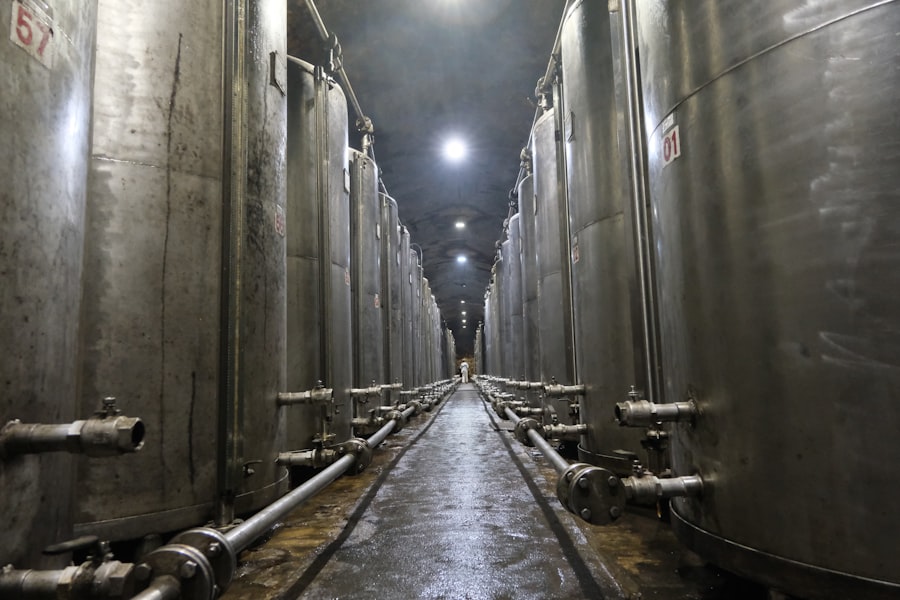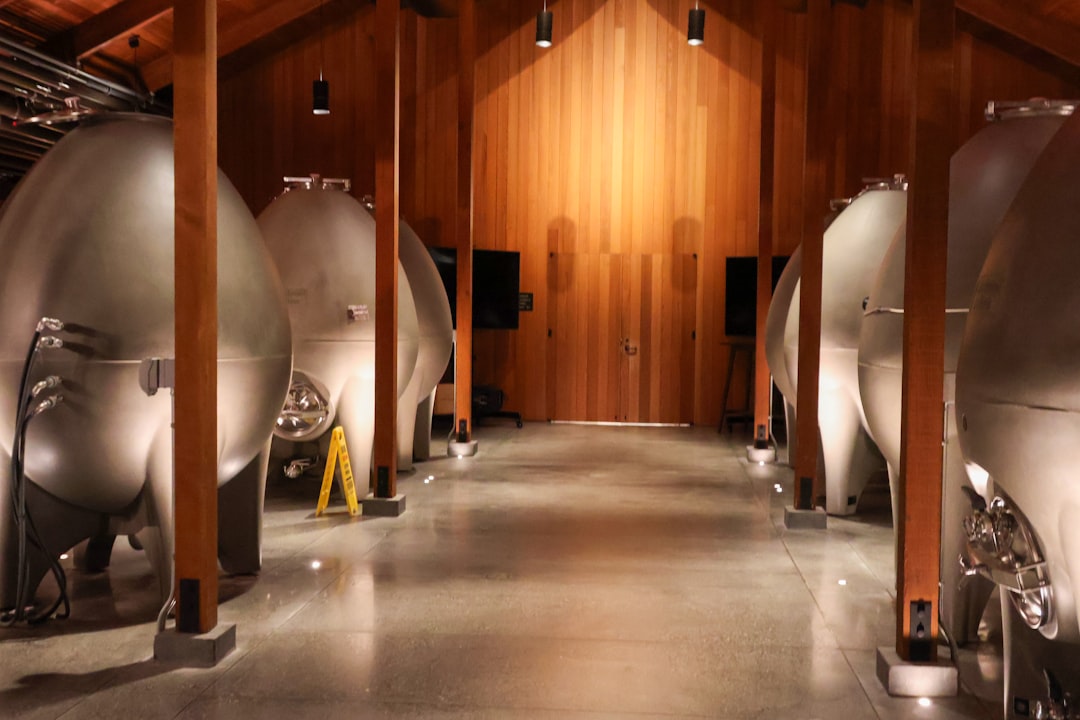Fermentation is a fascinating biochemical process that transforms sugars into acids, gases, or alcohol through the action of microorganisms. This natural method of food processing has been utilized for centuries, allowing you to enjoy a variety of foods and beverages that are not only delicious but also rich in nutrients. At its core, fermentation occurs when yeast, bacteria, or molds break down carbohydrates in the absence of oxygen, leading to the production of energy and various byproducts.
This process is not just limited to food; it also plays a crucial role in biofuel production and waste management. When you think of fermentation, you might immediately picture sourdough bread or a glass of kombucha. However, the scope of fermentation extends far beyond these popular examples.
It encompasses a wide range of products, including yogurt, cheese, pickles, and even alcoholic beverages like beer and wine. Each of these items showcases the remarkable versatility of fermentation, highlighting how this ancient technique can enhance flavors, textures, and nutritional profiles. As you delve deeper into the world of fermentation, you’ll discover that it is both an art and a science, blending tradition with innovation.
Key Takeaways
- Fermentation is a metabolic process where microbes convert sugars into acids, gases, or alcohol, crucial for food production and preservation.
- Microbes like bacteria and yeast play essential roles in fermentation, influencing flavor, texture, and safety of fermented foods.
- Fermentation has a long history in food production, dating back thousands of years, used to enhance flavor and extend shelf life.
- Quality control in fermentation is vital to ensure product safety, consistency, and desired sensory properties.
- Fermented foods offer health benefits, including improved digestion and probiotic effects, with growing interest in sustainable and ethical fermentation practices.
The Role of Microbes in Fermentation
Microorganisms are the unsung heroes of fermentation, playing a pivotal role in transforming raw ingredients into flavorful and nutritious foods.
For instance, yeast is responsible for converting sugars into alcohol and carbon dioxide during the fermentation of beer and wine.
Meanwhile, lactic acid bacteria are essential for producing yogurt and sauerkraut by fermenting lactose and other sugars into lactic acid. These microbes not only facilitate fermentation but also contribute to the unique characteristics of each product. As you explore the role of microbes in fermentation, you’ll find that they are not merely agents of change; they also create complex ecosystems that influence flavor and texture.
The interactions between different microbial species can lead to a diverse array of flavors and aromas, making each fermented product distinct. For example, in the production of sourdough bread, wild yeast and lactic acid bacteria work together to create a tangy flavor profile that is beloved by many. Understanding these microbial interactions can deepen your appreciation for the intricacies of fermentation and its impact on the foods you consume.
The History of Fermentation in Food Production

The history of fermentation is as rich and diverse as the foods it produces. This ancient practice dates back thousands of years, with evidence suggesting that humans have been fermenting food since at least 6000 BCE. Early civilizations discovered that fermentation could preserve food and enhance its flavor, leading to the development of various fermented products across cultures.
From the fermented fish sauces of ancient Rome to the kimchi of Korea, each culture has its own unique fermentation traditions that reflect local ingredients and tastes. As you trace the evolution of fermentation through history, you’ll notice how it has shaped culinary practices around the world. In many societies, fermented foods were not only a means of preservation but also a way to improve nutrition and digestibility.
For example, the fermentation process breaks down complex carbohydrates and proteins, making nutrients more accessible to your body. This historical perspective highlights the importance of fermentation in human survival and cultural identity, as it has allowed communities to thrive by maximizing their food resources.
The Science Behind Fermentation
| Metric | Description | Typical Range/Value | Unit |
|---|---|---|---|
| pH Level | Acidity level during fermentation | 3.5 – 6.0 | pH |
| Temperature | Optimal temperature for fermentation activity | 20 – 37 | °C |
| Fermentation Time | Duration for completion of fermentation | 12 – 72 | hours |
| Alcohol Content | Percentage of ethanol produced in alcoholic fermentation | 5 – 15 | % v/v |
| Carbon Dioxide Production | Volume of CO2 released during fermentation | Variable | mL per gram substrate |
| Microorganisms Involved | Common species used in fermentation | Yeasts (Saccharomyces cerevisiae), Lactic Acid Bacteria (Lactobacillus) | N/A |
| Substrate | Primary material fermented | Sugars, starches, lactose | N/A |
| Energy Yield | ATP produced per glucose molecule | 2 | ATP molecules |
At its essence, fermentation is a complex biochemical process governed by the principles of microbiology and biochemistry. When you consume food containing sugars, specific microorganisms begin to metabolize these sugars under anaerobic conditions—meaning without oxygen. This metabolic process results in various byproducts such as alcohol, carbon dioxide, and organic acids.
The specific type of microorganism involved determines the outcome of the fermentation process and the characteristics of the final product. Understanding the science behind fermentation can enhance your appreciation for this age-old technique. For instance, temperature plays a crucial role in determining which microorganisms thrive during fermentation.
Different yeasts and bacteria have optimal temperature ranges for growth, which can significantly influence flavor development and texture. Additionally, pH levels can affect microbial activity; for example, lower pH levels often favor lactic acid bacteria in yogurt production. By grasping these scientific principles, you can better understand how to manipulate fermentation conditions to achieve desired results in your own culinary endeavors.
How Microbes Contribute to Flavor Development
The contribution of microbes to flavor development during fermentation is nothing short of remarkable. As microorganisms break down sugars and other compounds, they produce a variety of metabolites that contribute to the complex flavors you experience in fermented foods. For example, during the fermentation of cheese, specific bacteria produce fatty acids that impart rich flavors while also influencing texture.
Similarly, in beer brewing, yeast generates esters and phenols that create fruity or spicy notes. As you savor a glass of wine or a bite of aged cheese, consider how these flavors are intricately tied to the microbial activity that occurred during fermentation. The interplay between different microbial species can lead to unexpected flavor combinations that surprise and delight your palate.
This complexity is one reason why fermented foods are often celebrated for their depth and richness compared to their non-fermented counterparts. By exploring various fermented products, you can embark on a flavorful journey that showcases the artistry of microbial contributions.
The Role of Fermentation in Food Preservation

Fermentation has long been recognized as an effective method for preserving food, allowing you to enjoy seasonal ingredients year-round while minimizing waste. The process works by creating an environment that inhibits the growth of spoilage-causing microorganisms through the production of acids or alcohols. For instance, pickling vegetables in brine not only enhances their flavor but also extends their shelf life by creating an acidic environment that deters harmful bacteria.
In addition to enhancing preservation, fermentation can also improve food safety by reducing the risk of foodborne illnesses. The acidic conditions created during fermentation can inhibit pathogens such as E. coli or Salmonella from thriving in your food.
This dual benefit—preservation and safety—has made fermentation an invaluable technique throughout history and continues to be relevant today as you seek out ways to enjoy fresh produce while minimizing spoilage.
Fermentation Techniques Used by Food Companies
Food companies have embraced fermentation techniques to create innovative products that cater to evolving consumer preferences. Traditional methods such as spontaneous fermentation are often combined with modern technology to ensure consistency and quality in large-scale production. For example, many breweries utilize controlled fermentation processes where specific yeast strains are cultivated under precise conditions to produce consistent flavors in their beers.
In addition to traditional techniques, advancements in biotechnology have led to new approaches in fermentation. Companies are now exploring genetic engineering to develop yeast strains with enhanced fermentation capabilities or improved flavor profiles. This intersection of tradition and innovation allows you to enjoy a diverse range of fermented products while ensuring quality and safety standards are met.
The Importance of Quality Control in Fermentation
Quality control is paramount in the world of fermentation, as it directly impacts the safety and consistency of fermented products. Food companies implement rigorous testing protocols throughout the fermentation process to monitor microbial activity, pH levels, and flavor development. By maintaining strict quality control measures, they can ensure that each batch meets established standards for taste and safety.
As you consider the importance of quality control in fermentation, think about how it affects your own experiences with fermented foods. Whether you’re enjoying a tangy yogurt or a crisp beer, knowing that quality control measures have been implemented can enhance your confidence in the product’s safety and flavor integrity. This commitment to quality not only benefits consumers but also fosters trust between producers and their customers.
The Health Benefits of Fermented Foods
Fermented foods offer a plethora of health benefits that make them a valuable addition to your diet. One of the most notable advantages is their probiotic content—live microorganisms that can confer health benefits when consumed in adequate amounts. Probiotics have been linked to improved gut health, enhanced digestion, and even strengthened immune function.
By incorporating fermented foods like yogurt or kimchi into your meals, you can support your overall well-being. In addition to probiotics, fermented foods often contain higher levels of vitamins and minerals compared to their non-fermented counterparts. The fermentation process can increase nutrient bioavailability by breaking down complex compounds that inhibit absorption.
For instance, fermented soy products like tempeh provide essential amino acids while also being easier for your body to digest than unfermented soybeans. By embracing fermented foods as part of your diet, you can enjoy both delicious flavors and numerous health benefits.
The Future of Fermentation in Food Production
The future of fermentation in food production looks promising as consumers increasingly seek out authentic flavors and health-conscious options. As awareness grows about the benefits of fermented foods, more companies are investing in research and development to create innovative products that cater to these demands. From plant-based alternatives to traditional dairy products to novel beverages infused with probiotics, the possibilities are endless.
Moreover, advancements in technology are likely to play a significant role in shaping the future landscape of fermentation. As scientists continue to explore microbial genetics and metabolic pathways, they may uncover new ways to enhance flavor profiles or improve nutritional content in fermented foods. This ongoing exploration will not only expand your options as a consumer but also deepen your understanding of how fermentation can evolve alongside culinary trends.
Ethical and Environmental Considerations in Fermentation
As you navigate the world of fermentation, it’s essential to consider the ethical and environmental implications associated with food production practices. Sustainable sourcing of ingredients is becoming increasingly important as consumers demand transparency regarding where their food comes from. Many companies are now prioritizing organic farming methods or local sourcing to minimize their environmental footprint while supporting local economies.
Additionally, ethical considerations extend beyond ingredient sourcing; they also encompass labor practices within the food industry. As you choose fermented products, consider supporting brands that prioritize fair labor practices and ethical treatment of workers throughout their supply chains. By making informed choices about the foods you consume, you can contribute positively to both social responsibility and environmental sustainability within the realm of fermentation.
In conclusion, fermentation is a multifaceted process that intertwines science with tradition while offering numerous benefits for both individuals and communities alike. From its historical roots to its modern applications in food production today—fermentation continues to shape our culinary landscape while enriching our lives through flavor diversity and health advantages alike.
Food companies are increasingly turning to fermentation as a method to enhance flavors, improve preservation, and boost nutritional value in their products. This ancient technique is being reimagined in modern food production, leading to innovative offerings that cater to health-conscious consumers. For a deeper dive into the fascinating world of fermentation and its applications in the food industry, check out this related article on fermentation practices at Hey Did You Know This.
WATCH THIS! The Secret Ingredients in Everything You Eat: Unmasking the “Natural Flavor” Illusion
FAQs
What is fermentation in the context of food production?
Fermentation is a natural metabolic process where microorganisms like bacteria, yeast, or molds convert sugars and other carbohydrates into alcohol, acids, or gases. This process is used by food companies to produce, preserve, and enhance the flavor of various food products.
Why do food companies use fermentation?
Food companies use fermentation to improve food safety, extend shelf life, develop unique flavors and textures, and increase the nutritional value of products. Fermentation can also help reduce food waste and create functional foods with probiotics.
What types of foods are commonly produced using fermentation?
Common fermented foods include yogurt, cheese, bread, beer, wine, sauerkraut, kimchi, soy sauce, tempeh, and pickles. Many of these products rely on specific fermentation processes to achieve their characteristic taste and texture.
How does fermentation improve the nutritional value of food?
Fermentation can increase the bioavailability of nutrients, produce beneficial probiotics, reduce anti-nutrients, and synthesize vitamins such as B vitamins and vitamin K. This makes fermented foods potentially healthier than their non-fermented counterparts.
Are fermented foods safe to eat?
Yes, fermented foods are generally safe to eat when produced under controlled conditions. The fermentation process often inhibits the growth of harmful bacteria by creating an acidic or alcoholic environment, which acts as a natural preservative.
Can fermentation be used to create plant-based or alternative protein products?
Yes, fermentation is increasingly used to develop plant-based proteins and alternative meat products. It helps improve texture, flavor, and digestibility, making plant-based foods more appealing to consumers.
Do all fermented foods contain live probiotics?
Not all fermented foods contain live probiotics. Some fermented products are pasteurized or cooked after fermentation, which can kill beneficial bacteria. To obtain probiotics, consumers should look for products labeled as containing live and active cultures.
How do food companies control the fermentation process?
Food companies control fermentation by selecting specific strains of microorganisms, regulating temperature, pH, oxygen levels, and fermentation time. This ensures consistent product quality, safety, and desired sensory attributes.
Is fermentation an environmentally friendly food production method?
Fermentation is considered environmentally friendly because it often requires less energy than other food processing methods, can reduce food waste, and supports sustainable production of plant-based foods and ingredients.
